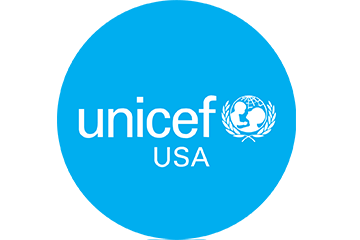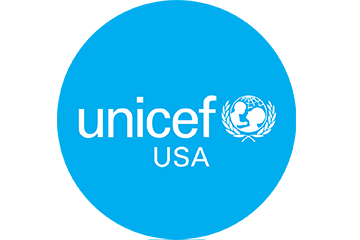In March 2020, the U.S. effectively halted asylum processing at its borders, citing public health concerns related to the COVID-19 pandemic and invoking Title 42 of the U.S. Code, which grants the U.S. government the ability to take emergency action to stop the spread of communicable diseases.
Asylum seekers — many of them children and families fleeing violence, poverty and other threats to their health, safety and well-being — began to be expelled without due process or access to adequate protection screenings.
In November 2020, a federal judge issued a preliminary injunction halting the expulsion of unaccompanied children under Title 42. However, this injunction does not apply to children accompanied by family members who continue to be expelled.
Asylum seekers from Guatemala waiting in a shelter in Tijuana, Mexico for their asylum case to be processed. © Balam-ha Carrillo for UNICEF Mexico
Fast forward to March 4, 2022. On that day came two court rulings. In one, a U.S. appeals court circuit judge described Title 42 as a “relic from an era with no vaccines, scarce testing, few therapeutics and little certainty” — noting that “this is March 2022, not March 2020” — and ordered the U.S. government to exempt all asylum-seekers with credible fear of persecution and torture from being expelled. In the other, a federal judge in Texas ruled that unaccompanied children — one of the few groups that has been allowed to seek protection and safe harbor in the U.S. — can now be subject to expulsions under Title 42.
Decisions this contradictory demonstrate not only the vagueness of Title 42 but how its varied interpretation can have serious consequences for those desperately fleeing life-threatening conditions.
Although the Biden Administration has responded to the latter court ruling by terminating the use of Title 42 for unaccompanied children, UNICEF and others remain deeply concerned that other asylum seekers will continue to be expelled under this policy — with grave consequences.
How Title 42 endangers the safety and well-being of asylum-seeking children and families
In 2021, 480,000 individuals were encountered by U.S. Customs and Border Protection as part of family units, up from 70,000 the previous year. The rise in the number of asylum seekers, combined with the expulsion of children and families, has created a dire humanitarian situation in northern Mexico and in countries of origin, where critical services for those returned are stretched.
The families that continue to wait at the border for the U.S. to open its door – as well as those who are expelled – are exposed to dangerous conditions, including heightened risks of trafficking, exploitation, violence and abuse at the hands of smugglers and cartels.
The demographic makeup of the asylum-seeking population is also shifting. As an increasing number of Haitians and other Black, non-Spanish-speaking migrants — individuals who are also now subject to expulsion under Title 42 — journey to the U.S. border, there are concerns about increasing violence fueled by discrimination and racism.
Another serious consequence of Title 42 has been family separations. Due to the injunction that exempts unaccompanied children from being expelled under this policy, some families have made the difficult decision to send their children to attempt to cross the border alone.
Tents inside a shelter for migrant families waiting in Tijuana, Mexico, for a chance to seek asylum in the U.S. © Balam-ha Carrillo for UNICEF Mexico
Even before the implementation of Title 42, situations were already very difficult for asylum seekers. In late 2019, UNICEF spoke with migrant families waiting in Mexico for their asylum cases to be heard under the Migrant Protection Protocols, also known as “Remain in Mexico.”
One father who tried to apply for asylum at the U.S.-Mexico border told UNICEF: “I cannot go home, I don’t want to stay in Mexico. I just don’t know what to do. I want my sons to have a better future. I wish they’d let me stay in the U.S. and fight for my case there.”
Many are in similar situations as the border continues to be essentially closed to all noncitizens — and policies like Title 42 and “Remain in Mexico” worsen humanitarian conditions for the most vulnerable.
UNICEF remains deeply concerned with the lack of protection measures for migrant children and families
Children and families seeking asylum in the U.S. are fleeing some of the worst conditions. Gang violence, extreme poverty and limited access to education and social services — all exacerbated by the effects of climate change and COVID-19 — have forced many to flee their homes and embark on dangerous journeys north, only to encounter the harsh reality of a closed U.S. border and a weakened asylum process that further endangers them and offers little protection.
UNICEF continues to work closely with governments and civil society organizations in the region to improve protection and meet the needs of the most vulnerable. As part of these efforts, UNICEF has developed specific recommendations for improving the overall system of reception, care and services for unaccompanied children.
UNICEF USA supports efforts to meet the needs of vulnerable migrant children and families at every step of their journey — while advocating that goverments forgo any border policies that restrict families from seeking asylum
Migrant children are already in dangerous situations in countries of origin and along the migratory route. It is imperative that governments implement child-sensitive reception into their asylum processes, forgo any border policies that restrict families from seeking asylum and work to protect the overall well-being of children.
Title 42 must be rescinded, especially as non-essential international travel for noncitizens is allowed once again and COVID-19 regulations ease within the country. This policy is unnecessary and further exacerbates the risks to the safety and well-being of children.
Join UNICEF USA in asking President Biden to end Title 42 once and for all.
Kelly Yzique-Zea is UNICEF USA’s Manager for Migration, Child Protection and Domestic Advocacy.
Learn more about UNICEF USA’s efforts to advocate on behalf of the world’s most vulnerable children and how to get involved through UNICEF UNITE.
Support UNICEF’s work protecting the rights of children all around the world. Donate today.
Top photo: A child from Haiti traveling through the Darien Gap, a dangerous land route between Colombia and Panama. In 2021, Colombian migration authorities registered a record number of people, the majority from Haiti and Cuba, migrating through the country on their way north toward the U.S. UNICEF worked with local partners to meet urgent needs for safe water and protection services amid heightened safety risks. © UNICEF/UN0558565/Mendez





